AWS OBS and Huawei OceanStor Dorado CloudTier Solution
| Test Report |
1/ Executive Summary
Axians Global (“Axians”) assessed the CloudTier solution with Huawei OceanStor Dorado NAS and Amazon AWS OBS cloud storage.
In the assessment, Axians has determined that Huawei OceanStor Dorado NAS and Amazon OBS cloud storage works for the following scenarios:
| Test Scenario | System Involved | Result |
| NAS tiering to cloud | OceanStor Dorado V6 Amazon AWS S3 storage | Passed |
| NAS restore from cloud | OceanStor Dorado V6 Amazon AWS S3 storage | Passed |
In this document, you will find details on the above test cases and the captured output. The procedures conducted in the tests are referenced from standard online documentation from AWS and Huawei.
| Company Name: | Company Name: |
| Validated By: | Validated By: |
| Signature: | Signature: |
| Date: | Date: |
2/ Solution Overview
2.1 Solution Architecture
Cloud storage has some major advantage for many enterprise applications due to the network limitations and high outbound traffic charge. It is also not as reliable as typical primary enterprise storage. However, it does offer cost efficient storage capacity for less frequently accessed data.
With these characteristics, it makes a lot of sense to use cloud storage to store “cold” data and save cost. Some companies are already manually doing such data relocation as part of their routine archiving work. Huawei Dorado V6 is now offering a much more convenient and transparent way to do this job automatically.
The CloudTier feature offered on Huawei Dorado V6 all-flash array can connect to S3 storage (including Amazon S3 and more) over the internet, and use it as a cold data tier, and allows customer to configure a policy to define what kind of file can be relocated to the cloud. When the data is being visited again, the file can also be easily pulled back from cloud to local storage.
This solution takes full advantage of the cost effectiveness of cloud storage, without adding much provisional overhead, and therefore can help enterprise save cost on primary storage.
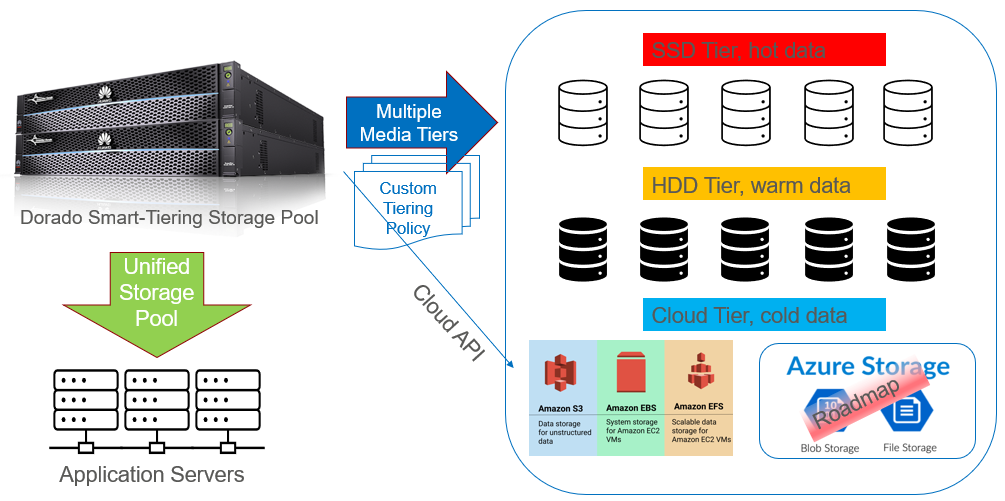
As shown in the architecture diagram above, application server only needs to deal with a unified storage space and no longer need to worry about the combination of on-premise and cloud storage. All the cumbersome work will be handled transparently by the Dorado storage controller.
3/ Test Environment
3.1 Networking Diagrams

Note : This network diagram is for reference only.
Network description:
- Production end
- A Linux host is deployed as the production host for production data insert. On this host, production data is preset.
- The management network and service network are connected to the OceanStor Dorado V6
- OceanStor Dorado V6
- The OceanStor Dorado V6 connects to AWS via public network
3.2 Hardware and Software Configurations
3.2.1 Configuration of a Single OceanStor Dorado
- OceanStor Dorado configuration
| Name | Description | Quantity |
| OceanStor Dorado | Huawei OceanStor Dorado 5000 V6 with two controllers | 1 |
| 10GE front-end interface module | 4-port 10GE SmartIO interface module | 4 |
| SAS SSD | Huawei 3.84 TB SAS SSD | 10 |
3.2.2 Configuration of Other Hardware
| Name | Description | Quantity | Function |
| Linux server | x86 server – CPU: 8 x – Memory: 8 GB – Main storage disk: 60 Gb – Network: GE and 10GE optical ports | 1 |
3.2.3 Test Software and Tools
| Software | Description | Quantity |
| AWS Public S3 | ||
| S3 browser | 9.9.7 Free Version |
4/ Test Cases
4.1 Tiering FS: Tier a whole file system with policy
| Objective | To verify that a File System can be tiered to S3 with policy. |
| Networking Diagram | Networking diagram for function compatibility tests |
| Prerequisites | 1. Dorado Destination cluster is installed and configured with GFS build 2. Source NAS is configured with S3 3. Dorado GFS cluster and Source NAS has NW connectivity 4. RMTD has been already created between Source and destination systems 5. Namespace already been attached to GFS with write policy as « Local write » and Attach policy as « Tiering » 6. GFS has been mounted to Linux host |
| Procedure | 1. Create few files and dirs. with following naming convention Folder named dir1 with small files Folder named sizes contains different sizes of files (128KB\512KB\1MB\2MB) Folder named large files contains 1000*4MB files Rest of the data: a. regular name b. unicode name UTF-8 c. long name 255 d. empty folder e. name with special characters 2. Check the Capacity of the File System 3. Execute tier job by specifying the root path of the file system with policy 4. Check the Capacity of the File System 5. Rehydrate whole file system |
| Expected Result | In step 2 the share path and capacity are correctly displayed. In step 3, the job with policy completed and data has been tiered to S3 In step 4, the share path and capacity are displayed smaller than step 2. In step 5, the rehydrate complete successfully (capacity are correctly Displayed, files in S3 has been moved back to storage) |
| Test Result | Step 1: The data on OceanStor Dorado storage.    Step 2: The capacity of File System is 3.910 GB on OceanStor Dorado 5000.  S3 browser: There is no file in bucket of Amazon S3.  Create one file, and the create time of the file is later than timestamp.  Step 3: Run the job with timestamp which represent 11:50:25 (file with mtime earlier than this should be tiered).  Job completed  Step 4: The capacity of the filesystem 26.555 MB (meta data).  Data showing in file system share.  Data showing in S3 bucket. 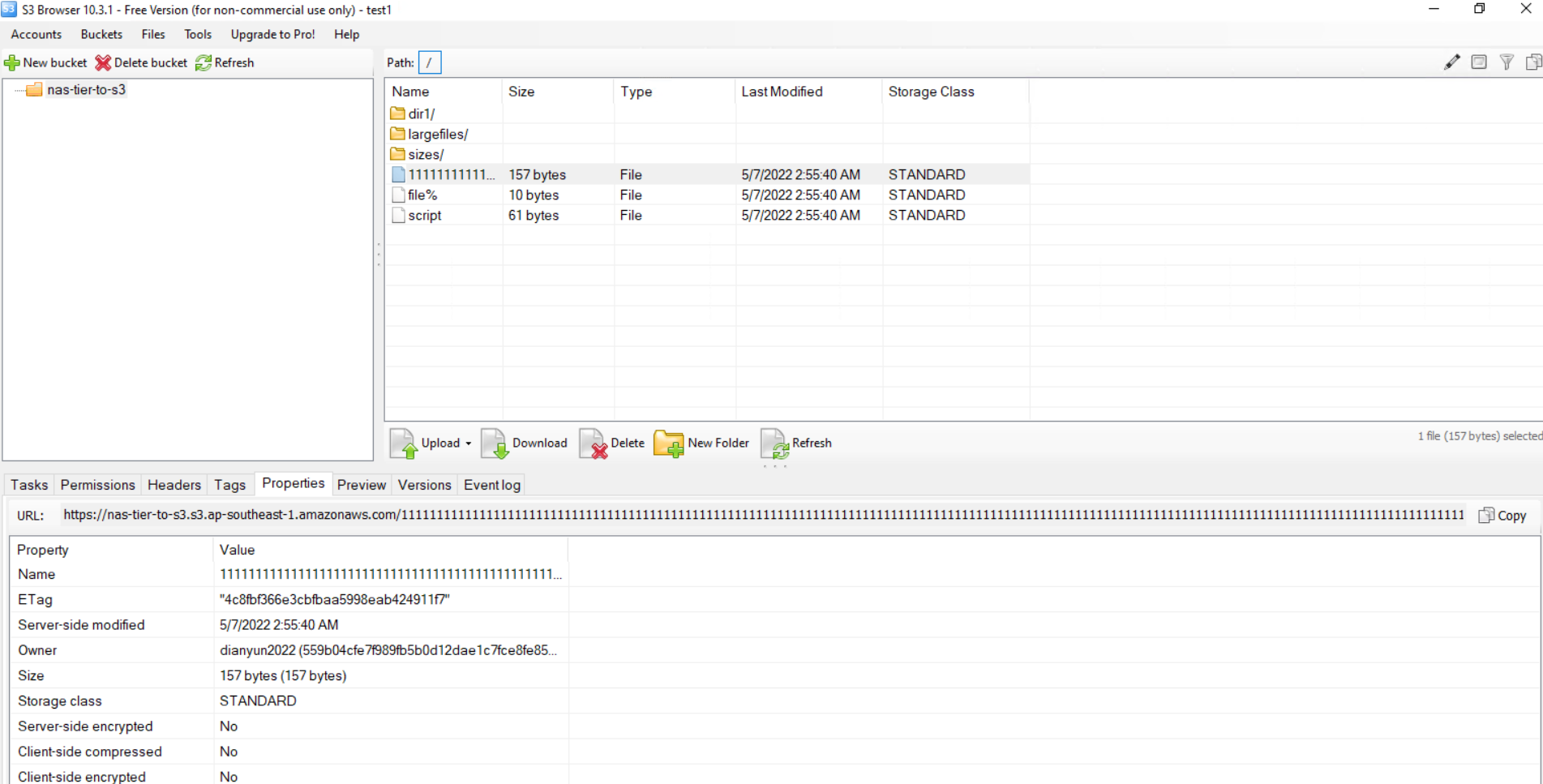 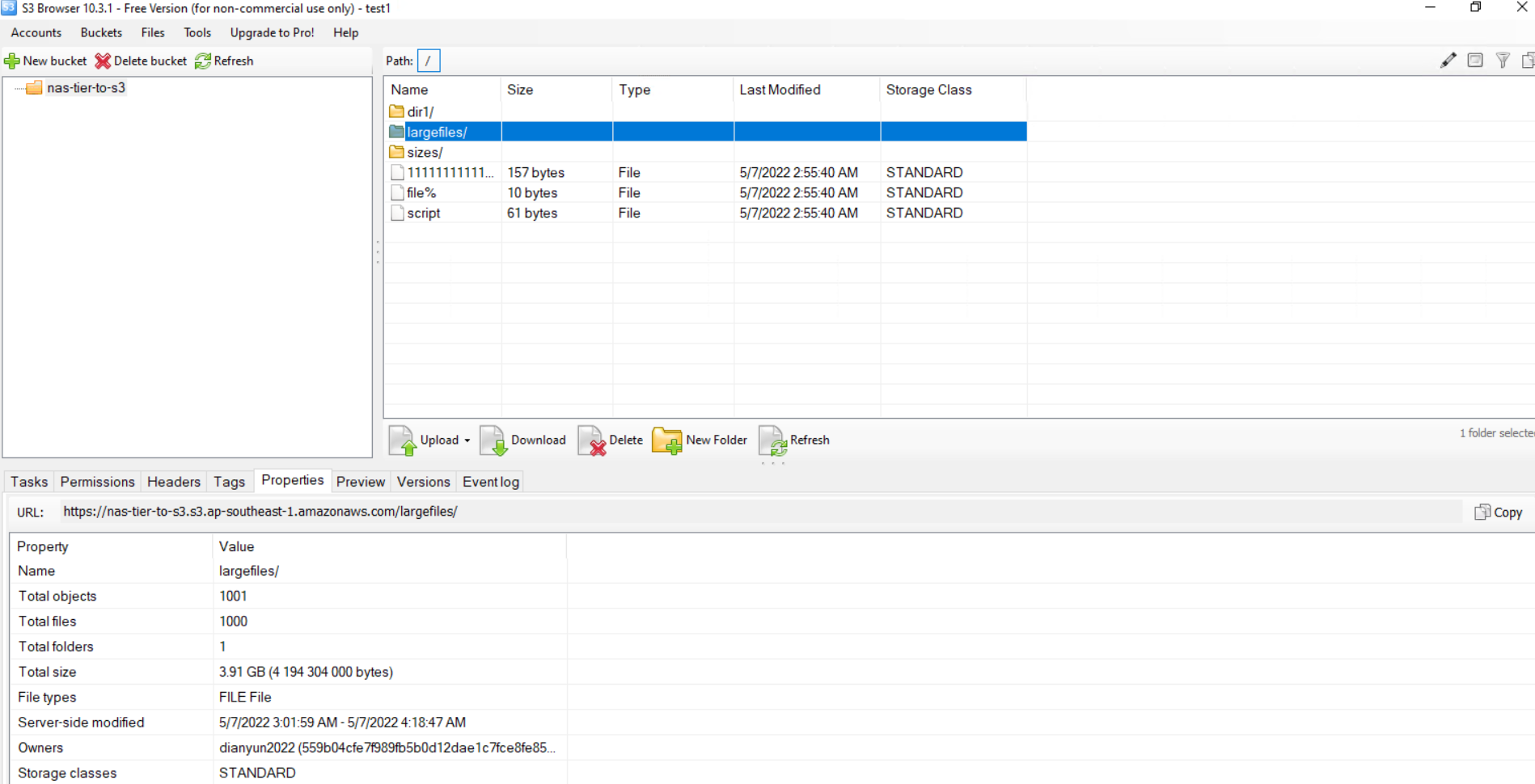  Data has been moved to AWS S3 capacity changed from 3.910GB to 26.555 MB The file created later than the archive time 17:51:00 is still kept in Dorado storage.  Step 5 Rehydrate whole file system.  Job started. 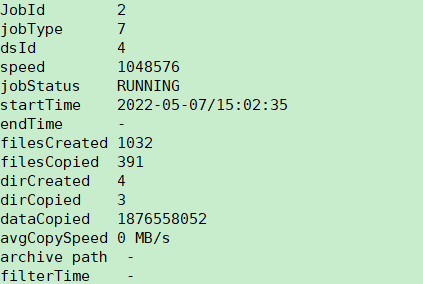 Data are moving back to dorado.   Job completed. 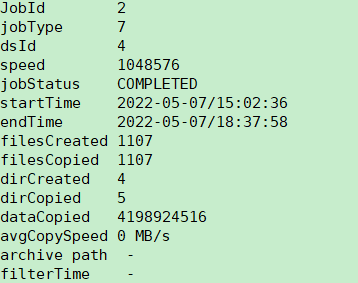 S3 bucket: All data has been moved back to Dorado storage. 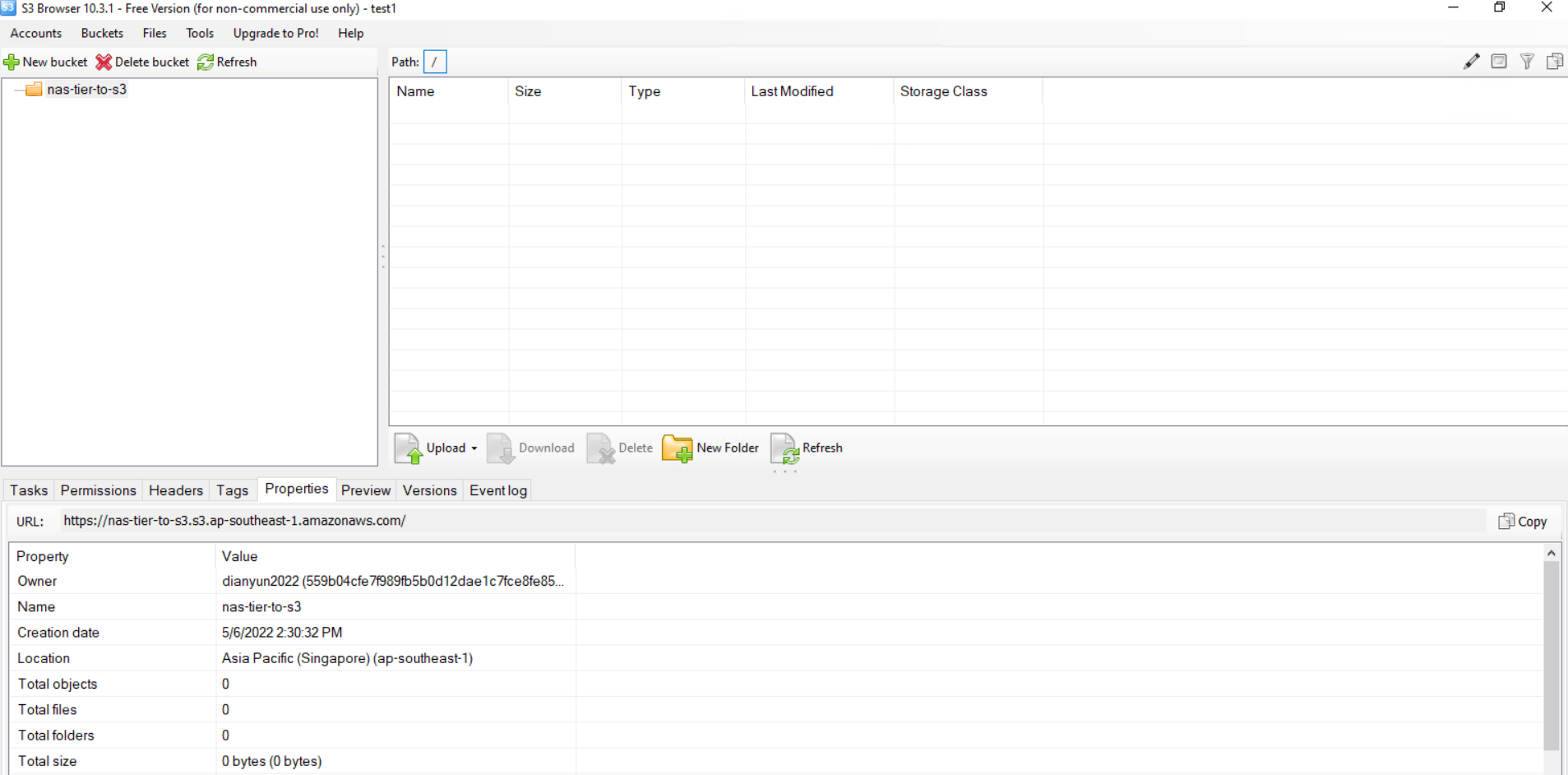 Capacity of the file system.  |
| Conclusion | Passed |
| Remarks |
4.2 Tiering Dir: Tier a directory
| Objective | To verify that a Directory within a File System can be tiered to S3 |
| Networking Diagram | Networking diagram for function compatibility tests |
| Prerequisites | 1. Dorado Destination cluster is installed and configured with GFS build 2. Source NAS is configured with S3 3. Dorado GFS cluster and Source NAS has NW connectivity 4. RMTD has been already created between Source and destination systems 5. Namespace already been attached to GFS with write policy as « Local write » and Attach policy as « Tiering » 6. GFS has been mounted to Linux host |
| Procedure | 1.Create a dir1 with 100 files and some other folders & files 2. Execute tier job by specifying the path of the dir 3. Rehydrate dir1 |
| Expected Result | In step 2, the job competed successfully, directory has been tiered to S3 In step 3, the rehydrate complete successfully |
| Test Result | Step 1: The data on OceanStor Dorado storage.  Step 2: Start the job, the directory is tiering from OceanStor Dorado to Amazon S3.   Job completed.  Data moved to S3.  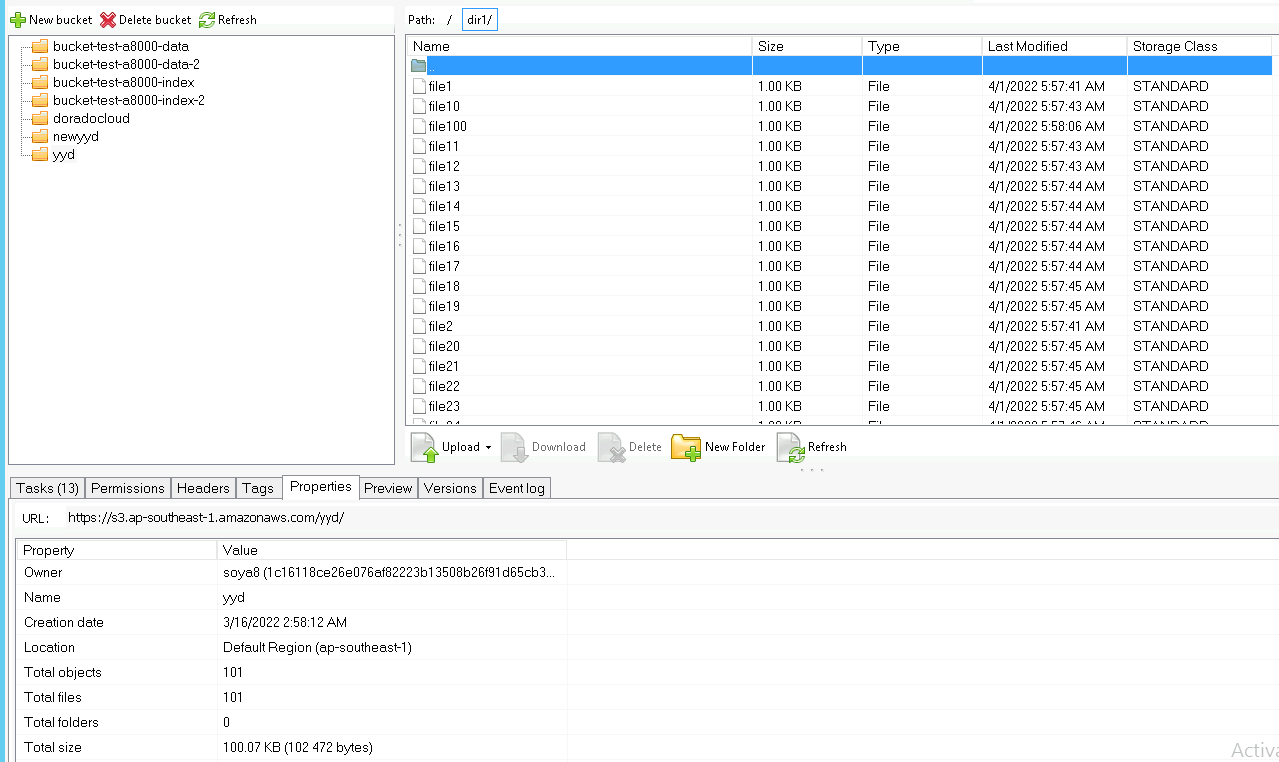  Step 3 Rehydrate dir1. 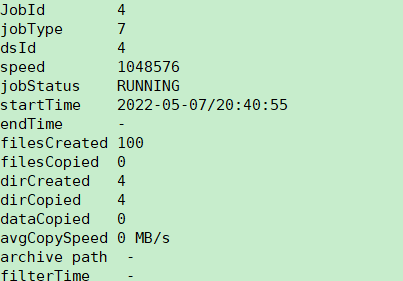  Job completed.  Data has been moved back to Dorado.  |
| Conclusion | Passed |
| Remarks |
4.3 Tiering File: Tier a File
| Objective | To verify that a file within a File System can be tiered to S3 |
| Networking Diagram | Networking diagram for function compatibility tests |
| Prerequisites | 1. Dorado Destination cluster is installed and configured with GFS build 2. Source NAS is configured with S3 3. Dorado GFS cluster and Source NAS has NW connectivity 4. RMTD has been already created between Source and destination systems 5. Namespace already been attached to GFS with write policy as « Local write » and Attach policy as « Tiering » 6. GFS has been mounted to Linux host |
| Procedure | 1.Create a file of 1MB size 2. Execute tier job by specifying the path of the file 3. Rehydrate file |
| Expected Result | In step 2, the job competed successfully, file has been tiered to S3 In step 3, the rehydrate complete successfully |
| Test Result | Step 1: The data on OceanStor Dorado storage.  Step 2: Start the job, the file is tiering from OceanStor Dorado to Amazon S3.  Job completed.  Data has been moved to S3.   Step 3: Rehydrate file.  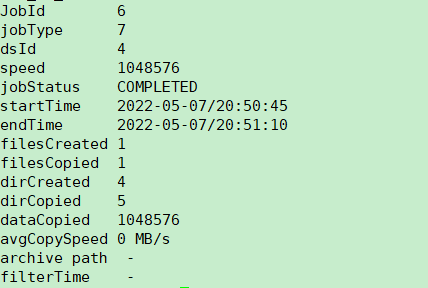 Data has been moved back to Dorado.  The MD5 of the file:  |
| Conclusion | Passed |
| Remarks |
4.4 Tiering File: Read a tiered File
| Objective | To verify that a file could be read after tiered to S3 |
| Networking Diagram | Networking diagram for function compatibility tests |
| Prerequisites | 1. Dorado Destination cluster is installed and configured with GFS build 2. Source NAS is configured with S3 3. Dorado GFS cluster and Source NAS has NW connectivity 4. RMTD has been already created between Source and destination systems 5. Namespace already been attached to GFS with write policy as « Local write » and Attach policy as « Tiering » 6. GFS has been mounted to Linux host |
| Procedure | 1. Create a file with contents 2. Execute tier job by specifying the path of the 3. Read the file |
| Expected Result | In step 2, the job competed successfully, file has been tiered to S3 In step 3, the file is readable In step 4, the rehydrate complete successfully |
| Test Result | Step 1: The data on OceanStor Dorado storage.  Step 2: Start the job, the file is tiered from OceanStor Dorado to Amazon S3. 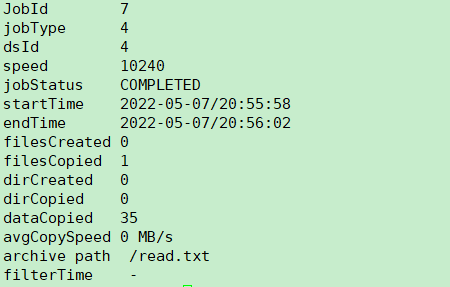 Data has been moved to S3. 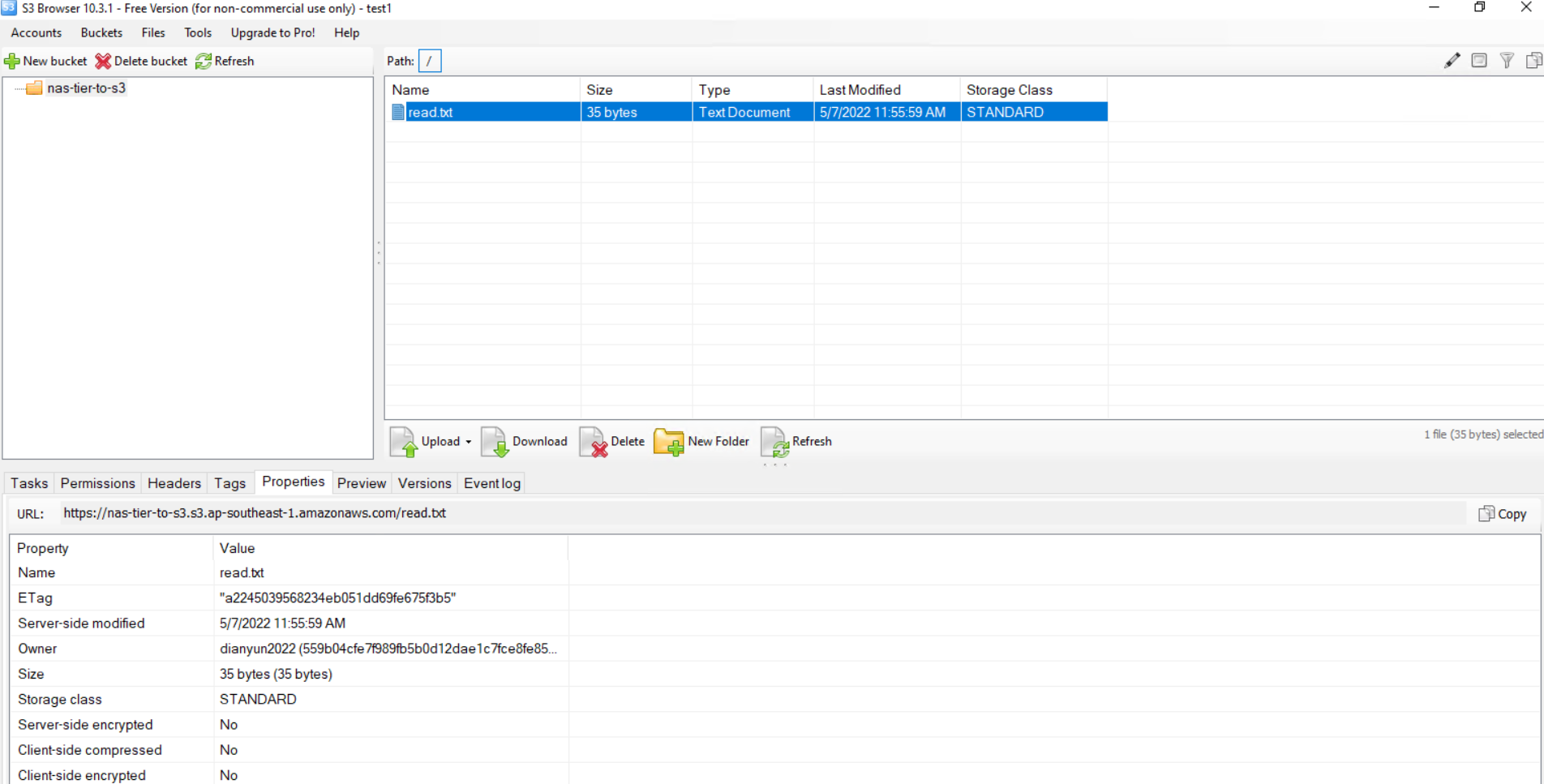  Step 3 Read the file. 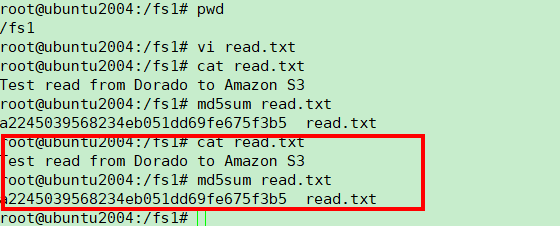 |
| Conclusion | Passed |
| Remarks |
4.5 Delete+Post Tiering: Delete a tiered file
| Objective | To verify that Deletion could work after file is tiered to S3 |
| Networking Diagram | Networking diagram for function compatibility tests |
| Prerequisites | 1. Dorado Destination cluster is installed and configured with GFS build 2. Source NAS is configured with S3 3. Dorado GFS cluster and Source NAS has NW connectivity 4. RMTD has been already created between Source and destination systems 5. Namespace already been attached to GFS with write policy as « Local write » and Attach policy as « Tiering » 6. GFS has been mounted to Linux host |
| Procedure | 1. Create a file of 1MB size 2. Execute tier job by specifying the path of the 3. Delete the file |
| Expected Result | In step 2, the job competed successfully, directory has been tiered to S3 In step 3, the file has been deleted both from Dorado and S3 |
| Test Result | Step 1: The data on OceanStor Dorado storage.  Step 2: Start the job, the file is tiered from OceanStor Dorado to Amazon S3.   Step 3: Delete the file on the host.  File hs been deleted from S3 as well. 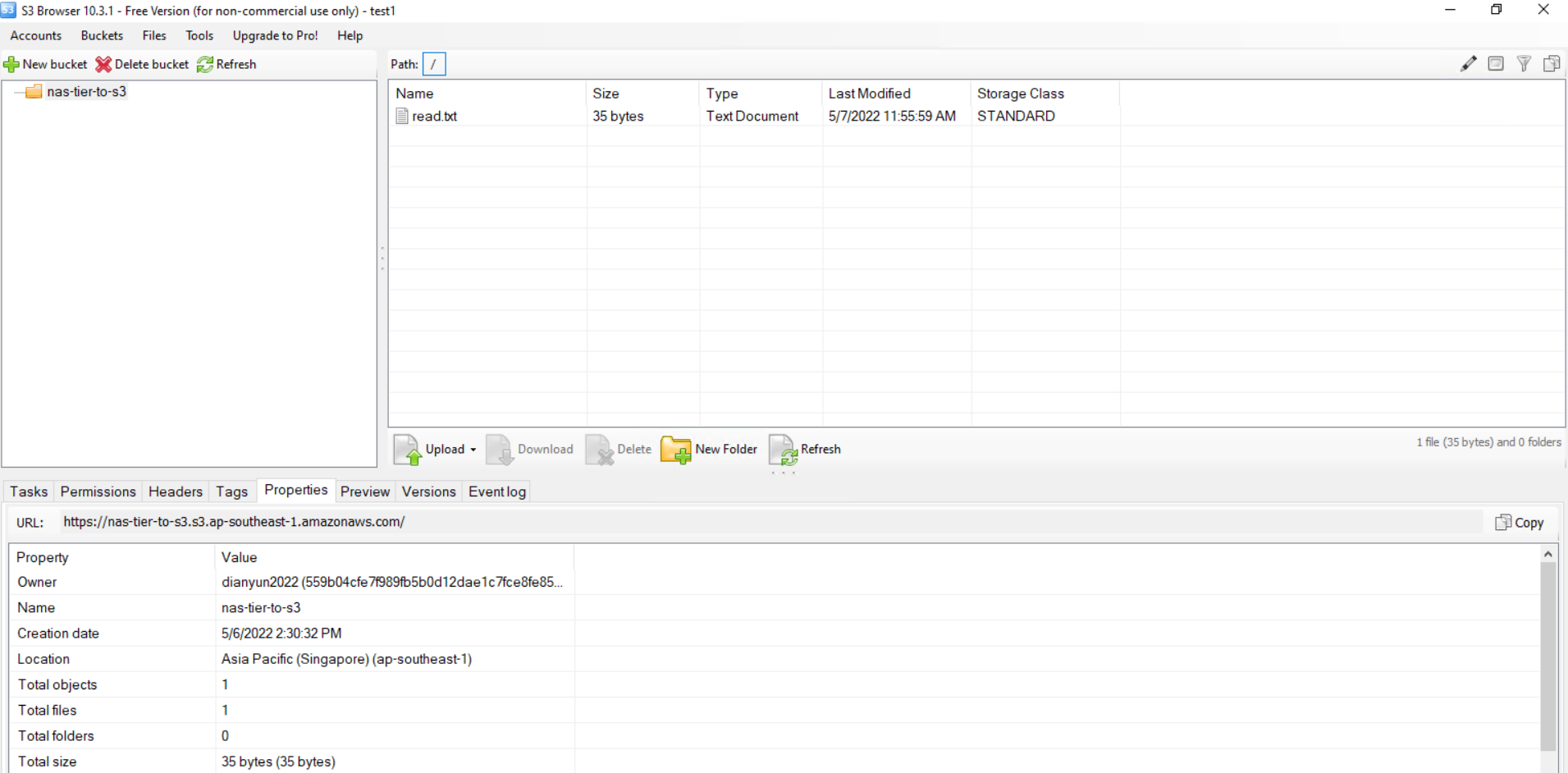 |
| Conclusion | Passed |
| Remarks |
4.6 Write+Post Tiering: Append to a tiered file
| Objective | To verify that Changing could work after file is tiered to S3 |
| Networking Diagram | Networking diagram for function compatibility tests |
| Prerequisites | 1. Dorado Destination cluster is installed and configured with GFS build 2. Source NAS is configured with S3 3. Dorado GFS cluster and Source NAS has NW connectivity 4. RMTD has been already created between Source and destination systems 5. Namespace already been attached to GFS with write policy as « Local write » and Attach policy as « Tiering » 6. GFS has been mounted to Linux host |
| Procedure | 1. Create a file named append.txt 2. Execute tier job by specifying the path of the 3. Now do append the file for 1 time (echo « some text » >> filename) 4. File is rehydrated again |
| Expected Result | In step 2, the job competed successfully, directory has been tiered to S3 In step 3, the new file is readable In step 4, the rehydrate complete successfully |
| Test Result | Step 1: The data on OceanStor Dorado storage.  Step 2: Start the job, the file is tiered from OceanStor Dorado to Amazon S3.  Data moved to S3.  Step 3: Add record to append.txt, and read data from file system share.  View the data from S3.  Step 4: File is rehydrated again.   Data moved back to Dorado and the file shows correctly.  |
| Conclusion | Passed |
| Remarks |
5/ Results
5.1 Basic Information
| Vendor | Huawei Technologies Co., Ltd. |
| Product | Huawei OceanStor Dorado V6 |
| Location | |
| Test Personnel | |
| Date | |
| Other Information | – |
5.2 Conclusion
All function compatibility tests on the CloudTier solution using Huawei OceanStor Dorado and AWS S3 are passed. The function compatibility tests cover:
- Tier a whole file system with policy Passed
- Tier a directory Passed
- Tier a file Passed
- Read a tiered file Passed
- Delete a tiered file Passed
- Append to a tiered file Passed
Refer to chapter 2 Test Cases for detailed test procedures and results.